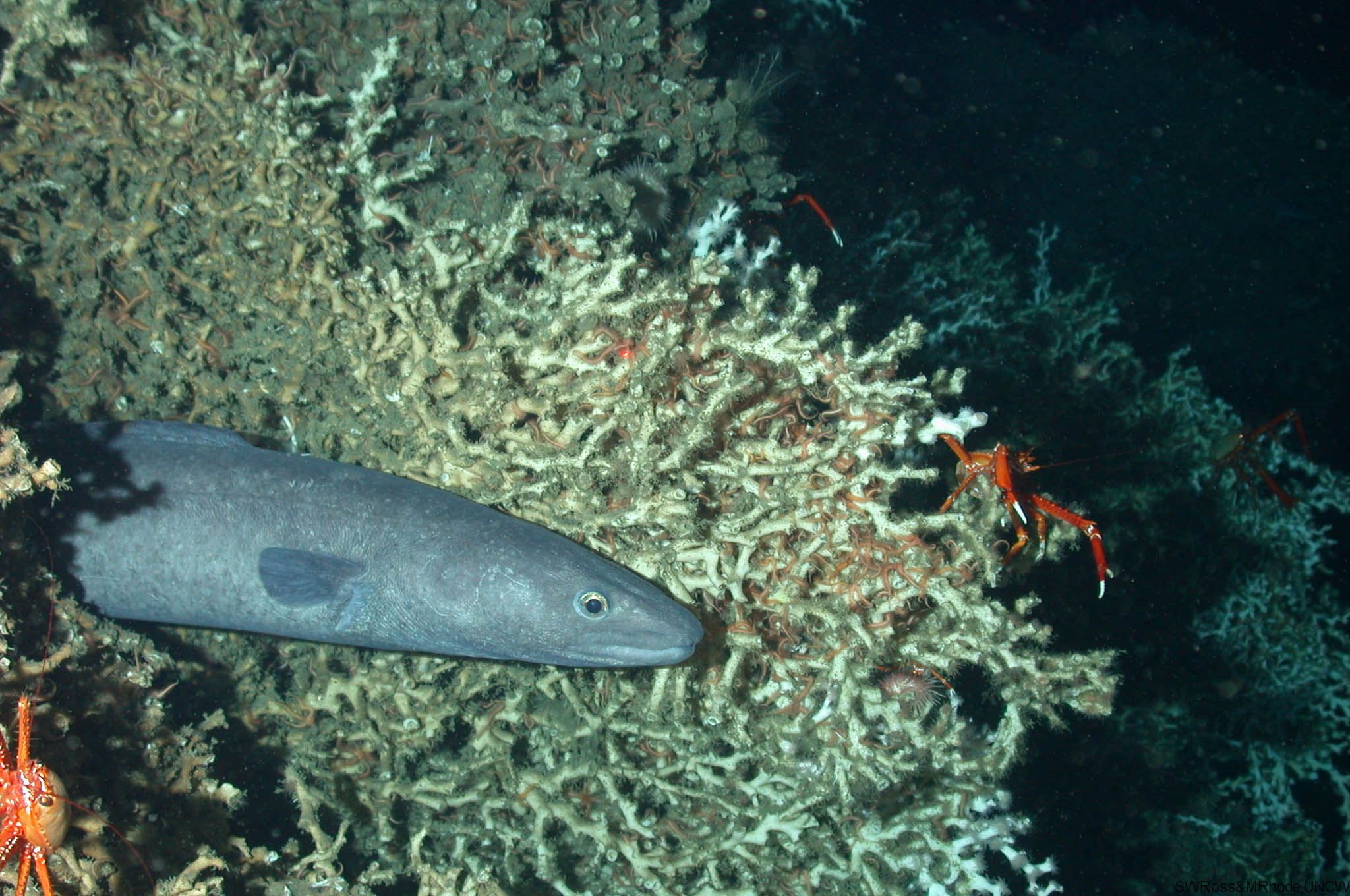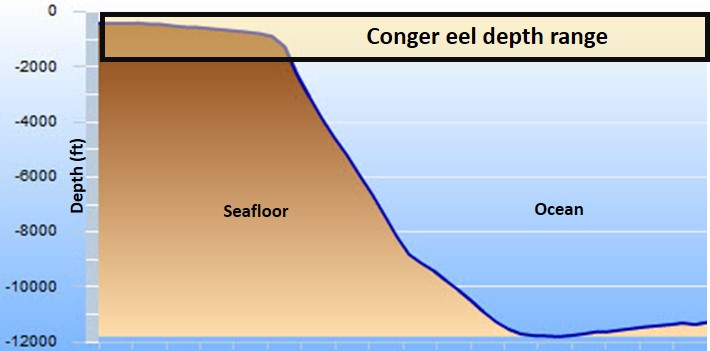
 |
Conger Eel (Conger oceanicus) Photo Credit: S.W. Ross and M. Rhode (UNCW) Photo Credit: S.W. Ross and M. Rhode (UNCW)
Description: Although they eat mostly fish, conger eels are predators and have been know to attack humans. They’re frequently observed in deep reef habitats, sheltering in holes and crevices. There is quite a bit of uncertainty about the conger eels breeding behavior but there is information about the fish’s larval form. The larva are flat, long, thin and almost completely transparent. They drift at the surface of the ocean for up to two years before morphing into adults. The adult conger eels may grow to over 6.5 feet long and, in some places, are valued as food fish. |
Geographic DistributionFigure 1: Relative probability of occurrence of Conger Eel (Conger oceanicus) based on computer generated distribution maps. Data source: Aquamaps Depth Profile Figure 2: Approximate depth range of Conger Eel (black box). Slope of seafloor is a generalized representation of the Gulf of Mexico shelf and outer continental shelf. |